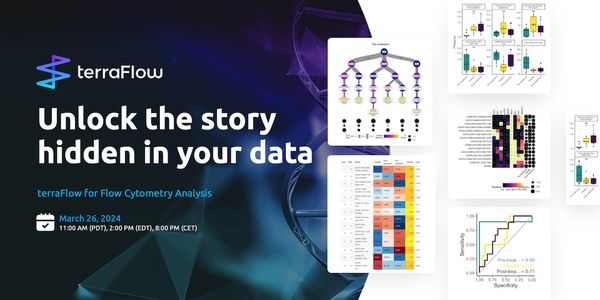Laboratory Coding
Laboratory Coding assigns a one to five letter moniker to newly developed animal strains used for research. The lab code (also called laboratory code or laboratory registry code) identifies the institute, laboratory, or investigator that developed the model. The Institute for Laboratory Animal Research (ILAR) tracks and maintains the Laboratory Code Registry.
-
MAR 26, 2024 | 11:00 AMEver wonder what you’re missing in your data? The sheer complexity of today’s flow and mass cytometry datasets demands automated solutions. Machine learning plugins only provide...MAR 19, 2024 | 10:00 AMC.E. CREDITSLaboratories use the same laboratory equipment they invested in for COVID testing to perform PGx testing. With COVID testing reimbursement dropping, many laboratorians are considering implem...By examining the host response to SARS-CoV-2 infection we gain valuable insights into viral pathogenesis and COVID-19 progression. MicroRNAs (miRNAs), a class of small (18-22nt), non-coding...
SEP 27, 2021 | 8:00 AM
Date: September 27, 2021 Time: 8:00am PDT Depression affects more than 264 million people worldwide and is a major contributor to the overall global burden of disease. The pathophysiology of...
Speaker:
Dr.Shujia Zhu
Presented at: Thermo Fisher Scientific - Electron Microscopy Webinars
Sponsored By: Thermo Fisher Scientific
Sponsored By: Thermo Fisher Scientific
Self-amplifying RNA replicons are promising candidates for next generation vaccines against human coronaviruses with pandemic potential. Self-amplification of RNAs in host cells generates mo...
FEB 24, 2021 | 7:00 AM
Date: February 24, 2021 Time: 7:00am (PST) Nucleotide variants can cause functional changes by altering protein–RNA binding in various ways that are not easy to predict. This can affec...
JAN 26, 2021 | 8:00 AM
Date: January 26, 2021 Time: 9:00am (PST), 12:00pm (EST) Over the past years, CRISPR/Cas genome editing has quickly become the method of choice for genetic manipulation, owing to its ease-of...
Background: Healthcare access (HCA) encompasses five important dimensions: Affordability, Availability, Accessibility, Accommodation and Acceptability. Published studies of cancer typically...
Speaker:
Tomi Akinyemiju, PhD, MS
Extracellular vesicles (EVs) are nanosized vesicles containing active proteins, lipids, and different types of genetic material such as non coding RNA species, related to the characteristics...
MicroRNAs (miRs) are small non-coding RNAs whose expression is altered in several types of human cancers. Recent evidence supports their inter-cellular transfer through extracellular vesicle...
JUN 12, 2020 | 8:00 AM
DATE: June 12, 2020 TIME: 08:00 am PDT, 11:00 am EDT Whole genome imaging using the Saphyr instrument from Bionano detects structural variants (SVs), such as insertions, deletions,...
MAY 14, 2020 | 1:00 AM
DATE: May 14, 2020 TIME: 10:00am CEST Massively parallel genome engineering enables rapid and simultaneous evaluation of genotype-phenotype relationships at a genomic scale. With the Inscrip...
The International Council for Standardization in Haematology (ICSH) is a nonprofit organization dedicated to providing open-access guidance documents to enhance the quality of laboratory tes...
Rapid access to high quality comprehensive coagulation test results is critical to patient care. In an environment where clinical laboratories constantly experience price and labor pressure,...
Speaker:
Eleanor Herriman, MD, MBA
, Oksana Volod, MD
Complex genomes, including the human genome, contain ‘dark’ regions that standard short-read sequencing technologies do not adequately resolve—overlooking many variants tha...
























